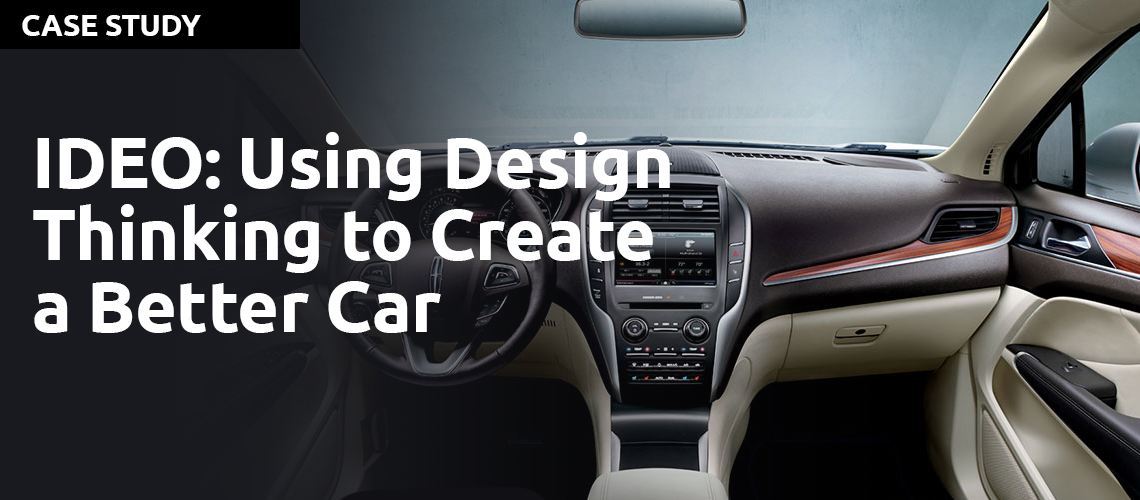
THE CHALLENGE
Remove roadblocks that can compromise the in-car experience for the Lincoln car company.
IMPACT
The final product, the Lincoln MKC luxury crossover, is credited with helping the Lincoln brand outpace growth in the luxury segment by more than two-to-one over competitors.
THE OUTCOME
A pop-up studio where IDEO designers helped departments communicate and collaborate more effectively.
THE PROJECT
Designing a new car takes years and requires strong collaboration between thousands of people. So when the Lincoln Motor Company began developing the luxury crossover Lincoln MKC, they invited IDEO to share key design-thinking methods to employees and departments to improve the process and to land on a better product.
IDEO built a pop-up studio inside an old manufacturing bay at the company’s Dearborn, Michigan, headquarters, and organized a collaboration between IDEO designers-in-residence and Lincoln employees from different departments. During the six-month collaboration, the IDEO team built a full-scale interactive car prototype to make various in- and out-of-car experiences tangible, and collected user feedback along the way. And they shared key design-thinking methods, which helped galvanize action across different teams, and sped up understanding of design thinking.
The MKC is credited with helping the Lincoln brand outpace growth in the luxury segment by more than two-to-one over competitors. Next up is turning the heads of luxury customers in China, where Lincoln plans to open 60 stores in 50 cities by 2016.
"By bringing together all our key internal stakeholders, the MKC meets and exceeds customer expectation," said Scott Tobin, Director, Lincoln Product Development.
WHAT CAN WE LEARN?
IDEO used prototyping to gain feedback from the team and possibly the end users in order to learn fast and refine the ideas to be more desirable and appropriate for the user earlier in the project. The case study would be even stronger if they explained what ideas were tested, with who and how they were modified before the final design was set. The case suggests that setting up a design team in the clients offices helped to achieve the two times growth result or perhaps better buy in from the team, we are not sure. How that result was achieved is not clearly articulated in the text. Quantifying the success of the overall project is very helpful to get a sense of the type of impact that design thinking can have on a project, but how much of this result is as a direct consequence of using design thinking is not clear.
